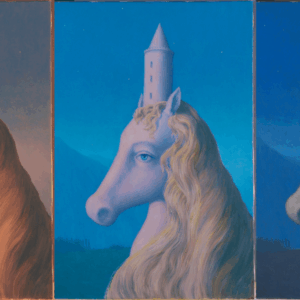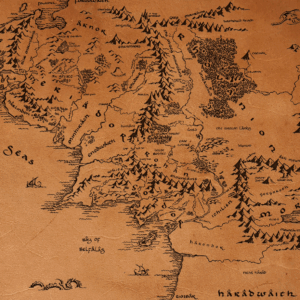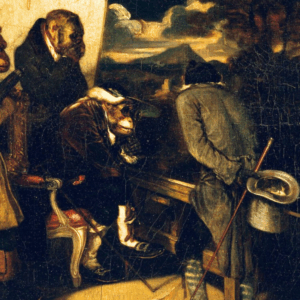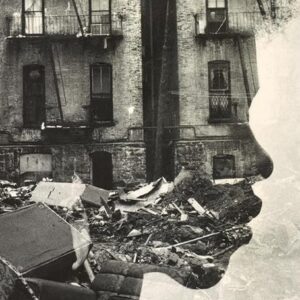
On Gaza, Assia Wevill, and Finding “Permission to Narrate” in a Time of Genocide
Emily Van Duyne Reads Jamie Hood, Amie Souza Reilly, Zadie Smith, and Edward Said
“And so now, as always, literary criticism must adapt to the current horror in Palestine or else it must be deferred. Because if literary criticism has nothing to contribute to Palestine’s liberation, then we have no good reason to spend time on it.”
–Steven Salaita, “Literary Criticism in a Time of Genocide”
*
A year ago, Zadie Smith published a short essay called “Shibboleth,” which shares its title with a Ted Hughes poem I know well. In it, she used her New Yorker platform to equate the Israeli genocide of Palestinians with the so-called rampant antisemitism on American college campuses. Smith wrote that students in the liberation camps who (correctly) denied they were endangering Jewish students on campus were acting against their own moral code: if they claimed they were there to ensure the safety of the weakest among us (those being slaughtered in occupied Palestine), then that category should by necessity include American Jewish students, who deserved their protection as much as, or more than, Palestinians. This campus culture war, she wrote, abounded with shibboleths “(river to the sea…Zionist…imperialist, terrorist).” Use one, and you “[establish your] positionality” in a conflict where “language and rhetoric are… weapons of mass destruction.”
As a longtime fan of Zadie Smith, I had hoped her similarities with Hughes would end at their common title. But the moral and logical gymnastics she performed in “Shibboleth” brought to mind Hughes’s tactical character assassinations of Sylvia Plath and Assia Wevill (the infamous “other woman” in the Plath-Hughes marriage disaster). Wevill was a transnational Holocaust refugee who had lived in Germany, Italy, Palestine, England, and Canada before she turned 20. Hughes’s “Shibboleth” is about her, a short and vile poem set at a posh British manor home, where Wevill trips up her English, betraying her background—or, in Smith’s parlance, establishing her positionality. Her hosts spew dated racist epithets at her like mustache-twirling villains before Hughes’s fantasy ending: Wevill as a damsel in distress, “pinioned” and facing down the barrel of a gun.
If I was seeking permission to write about Gaza from Said, I sought a how-to from Hood and Souza Reilly, writers unafraid to adopt radical forms to bring their visions to life.
Actually, the whole poem is a fantasy. Like Smith’s imagined nightmare of an American college campus that is somehow the equivalent to a starving, firebombed Gaza, Hughes dreams up a British aristocrat to do the social and literal violence against Wevill that, in real life, he managed fine on his own. No evidence exists that Wevill ever visited a manor home in “the Berkshires” where she was accosted by a snarling lord for her accent, but Hughes did send her a 1968 letter he called the “Draft Constitution” where he wrote that if she kept speaking English as flawlessly as she did, she could no longer live with him. Drop your pretensions, he said, and be “as German” or “as Israeli” as possible, or she could take their daughter, Shura, and move out. She did move them out and, about a year later, killed herself and Shura in the kitchen of their London flat. Assia was forty-two. Shura had just turned four.
A year ago, I read Smith’s essay in a rage, and was determined to write my own, drawing lines between the shibboleth, Hughes, his erasure of Assia, and Smith’s erasure of Palestine, where Assia Wevill grew up and was educated before her family forced her to marry an English soldier in 1947, hoping this could get them safely back to Europe in the midst of the Palestinian expulsion. But I failed. My obsession with the erasure of individual women felt pathetically inadequate in the face of the wholesale slaughter of a people, one I was swiftly learning had been going on for the whole of my lifetime, having begun nearly half a century before I was born.
I wrote ten thousand-plus unusable words, and dreamt of olive groves and blood. Smith had dubbed her shibboleths “weapons of mass destruction,” which is a shibboleth in itself. Call a word a bomb and you out yourself as a Western intellectual, more afraid of an idea than of an MK-84. Hughes had committed damnatio memoriae against Assia, the Roman punishment of systemically erasing the memory of someone from public life. But as I wrote, and rewrote, Israel dropped American-manufactured bombs on refugee tents, vaporizing the people inside. In the face of actual bombs—and facing the image of a man holding his young son’s severed head in his hands—writing about a single woman’s historic suffering at the hands of a single, long-dead man shamed me into a year-long quiet.
*
“Shame particularizes. Shame isolates,” Jamie Hood writes in Trauma Plot: A Life, her recent genre-bending book about rape, which I began immediately after I finished Amie Souza Reilly’s Human/Animal: a bestiary in essays. The latter follows three surreal years in which Souza Reilly’s next door neighbors, two brothers named Wes and Jim, stalked her family in an attempt to drive them out of their newly purchased dream home, which the brothers coveted.
I read both books during the first week of May, while staying in a literal Tudor cottage across from Sylvia Plath’s grave in West Yorkshire. I had managed to overcome the particularizing and isolating shame of my experiences of rape and intimate partner violence to write a book about Plath which made the case that Hughes had been a violent husband to her, and to Assia Wevill, and that my lived experience had helped me to discern this pattern and call it what it was. It debuted in the summer of 2024 as bombs rained down on Gaza and I sought Edward Said’s famous “permission to narrate”[1] my aforementioned, tiny entrée into writing about Palestine. A year later, in England, I was still trying to overcome the particularizing, isolating shame of being an American writer who had published nothing condemning this genocide.
As I read Hood’s excellent book, I wondered why any raped white woman in America, or elsewhere, would do other than to see these connections, to see rape as state violence perpetrated against her, and see herself, therefore, in every Palestinian…
If I was seeking permission to write about Gaza from Said, I sought a how-to from Hood and Souza Reilly, writers unafraid to adopt radical forms to bring their visions to life. Trauma Plot engages four distinct genres to lay claim to the dislocation and purchase sexual violence makes on a woman’s life, while Souza Reilly populates Human/Animal’s pages with a “bestiary,” her whimsical pencil sketches of animals. Each bears a name co-opted into the English language to characterize human violence as animalistic, and include a definition—to badger: to pester, to bother. To rat, to pig, to ram. Like the first half of Trauma Plot, and the majority of Sylvia Plath’s short life, the book takes place in New England, where the veneer of white middle-class morality can’t quite mask the ongoing structural violence ushered in by imperial colonialism half a millennia ago.
Human/Animal’s long forays into this history to contextualize violence as it relates to American home ownership (what Souza Reilly calls “[her] own suburban horror movie”) move the reader from smallpox blankets to Levittown to Michael Myers. These digressions disrupt the more vital narrative of Wes and Jim’s violence, where the writing is tautly paced, infused with the mundane terror of stalking: staring into and out of windows, watching the inevitable closed-circuit security camera footage, calling and calling back the police who arrive too late and do nothing.
That much of the land on which the story takes place was once an execution site is something Souza Reilly is keen to remind us. But reading that history, I wondered if she also felt she needed permission to tell her story, that placing it into history granted her the right to her narrative of violence that, as a white woman, she otherwise lacked. That the violence happens only to her property is part of the unwritten point of this strange book. Wes and Jim fetishize Souza Reilly’s dream home, but so does she, dropping small hints about its colonial charm, its leaded windows and horsehair in the plaster walls that “you can feel… if you run your hand over certain spots,” as though the house is a direct line to a history where the word colonial is merely an architectural descriptor, rather than, as Hood writes of Boston, a place infected with rot.
We are meant to understand that this is a house worth fighting for while also understanding that the so-called American Dream is the root cause of perpetual racist violence. This is a violence that, based on the dark histories of the suburbs she relates, Souza Reilly seems to stand in opposition to, whilst also fighting for her right to take ownership of it. It’s clear Souza Reilly wants us to understand that she understands her role in all of this. The book contains multiple acknowledgements of her own white, cis-woman privilege, but this can feel like an attempt to have her cake and eat it at the Shaker dining table in her colonial home.
Human/Animal’s title immediately called to mind the Israeli characterization of Palestinians as “human animals,” Gaza “a slaughterhouse,” its violent histories of American suburbs, Israeli settler violence. But I waited in vain for the book to make connections between the genocidal colonization of the continental United States and Israel’s colonial genocide of Palestine, despite the book debuting in the genocide’s eighteenth month. Instead there was a focus on identitarian politics, as though an acknowledgement of one’s whiteness, a telling of one’s awareness of racist histories, can act as absolution from them. This felt both myopic and, to me, disturbingly familiar.
Reading it brought to mind ongoing conversations I have been having for the last eighteen months with two friends directly connected to both Israel and Palestine, which I am not. Both urged me to write about the genocide immediately; one reminded me to de-center Plath, to start with Palestine, while the other dismissed my timidity, which I told him was the result of being neither Israeli or Palestinian, Jewish or Muslim. “You’re human, right?” he said, with a despairing little laugh.
According to the facts, I am. But as Said wrote, facts alone cannot speak for themselves—“they require a socially acceptable narrative to absorb, sustain and circulate them.” As a white American woman, a feminist literary critic, I had been trained to believe that the only narrative socially acceptable enough to get my story into the world was pain, my private, awful story, a rotten tooth that I had to extract and display for the world. I didn’t believe myself capable of writing a narrative socially acceptable enough to weave the facts of Assia Wevill’s life and death into this global story. I was not meant to take on the world itself, much less see myself as its citizen, speaking on its behalf.
But this is exactly what Jamie Hood does fearlessly in Trauma Plot: A Life. Her book begins with a critical essay depicting how the power of the individual rape story has been used “by the contrarian, the reactionary, the dictator” to undermine the potential of #MeToo as a mass movement. By highlighting the stories that were “the most glamorous, or else the most gruesome,” the 2017 iteration of #MeToo, and its detractors, wove a narrative in which rape is an anomalous event in a world that is, for women, otherwise orderly, normal, safe. In other words, we were led to believe that rape tears a hole in the narrative; but for Hood, rape is the narrative of her life; as it was for mine; as it has been, will be, for so many women.
Hood draws immediate connections between #MeToo and Palestine in her introduction. In our present moment, she says, “[i]t’s fashionable… to poke fun fun at [#MeToo].” Yet it was one vital way to “imagine and reimagine revolutionary dissent” in the face of “well-funded and militarized police departments [trying and failing] to obliterate coalition building against fascist rule (at the time of my writing, I think especially of the student encampments standing in solidarity with the Palestinian people).” She also touches briefly on the grim relationship between the American exploitation of white women’s chastity to excuse lynching and the ways the sexual violence against Israelis on October 7, 2023 is repeatedly trotted out as a “reason” for genocide. Both states use these as a smokescreen for their use of racialized, systemic rape as a tool of apartheid. A white woman, Hood locates her own rapes in this discourse and, “It makes me sick.”
As a white woman whose rapes are also firmly ensconced there, it makes me sick, too. But I see something deeper in Hood’s analysis of American sexual violence and the Israeli manipulation of the same. In the aforementioned “Permission to Narrate,” Said writes that the characterization by Israel (and by extension, America) of all Palestinians as terrorists works to dislocate Palestinians from both their literal homeland and from political logic: “The very indiscriminateness of terrorism, actual and described, its tautological and circular character, is anti-narrative. Sequence, the logic of cause and effect as between oppressors and victims, opposing pressures—all these vanish inside an enveloping cloud called ‘terrorism.’”
Hood accurately characterizes American sexual violence as a form of terrorism against women, a chaotic state of affairs we are broadly coerced to deny, and to which white women are asked to pledge allegiance. Align with white heteropatriarchy, we are told, and it will protect you. But this “protection” can and often does mean that sexual violence will instead happen to you in your own home, by men you must love and be grateful for, who will use your precious chastity as an excuse to uphold a terroristic state.
It makes us sick. Or anyway, it should. But as I read Hood’s excellent book, I wondered why any raped white woman in America, or elsewhere, would do other than to see these connections, to see rape as state violence perpetrated against her, and see herself, therefore, in every Palestinian; not to forego the nature of her individual trauma, but rather to use it as one tool in the greater force for collective liberation.
Or anyway. I wondered why it has taken me so very long to do so.
*
“There’s a simple, inviolable rule about genocide: normal life must come to a halt until it is defeated,” Steven Salaita wrote in May 2024, in his essay “Literary Criticism in a Time of Genocide.” A year later, I found myself in England, with the emergency in Gaza unimaginably worse. Stepping onto the platform of the railway station, the stony walls of West Yorkshire flashed it immediately back to me. The train rolled east to reveal a massive block of black, green, and red graffiti on the tracks’ dividing wall: “Free Palestine.” Walking to dinner that night, I saw that the graffiti portrait of Sylvia Plath on the wall of the Shoulder of Mutton pub had been altered. Next to it, in careful stencil print, someone had spray-painted, “Imagine being a mother in Gaza, 16,000+ children killed by ‘Israel.’”
I had returned to Heptonstall to seek absolution from Plath. For most of my life, she has haunted me like a fury, crying Vengeance. As a young woman who felt suffocated by her domineering father, poems like “Daddy” offered me an audacity that felt like freedom. Once I realized the role that marital violence had played in both her death and her strange posthumous reception, I became determined to tell a different version of her story, and to do it with an audacity that felt like freedom. Now the book was done and I wondered if, visiting her grave, I would feel differently. Would she lessen her hold on me? Could she rest?
How terrible to know that every time you try to speak, someone like this will shut you down. How necessary to do it anyway.
Plath’s graveyard is a staple in my dreams, dreams in which I can’t see or comprehend what lives outside of its limits; dreams in which the graveyard goes on forever, or is walled off; dreams in which it slopes down into nothingness. What is out there? I would wonder, and wake, finding that I couldn’t remember, all of Heptonstall’s narrow streets and gardens and views to a vast expanse of moor and forest condensed into the overgrown rows of headstones and uneven grass, wobbling with the dead.
In the flesh, I was determined to stare past the stones that wall off the back end of the cemetery and commit the landscape to memory. But standing there, I realized that memory wasn’t the problem; my imagination was. The whole of it was contained in this graveyard. The hold Plath’s bones had on me was so strong. It pulled me down into the earth, into her single story, which I had worked tirelessly and for literal decades to tell in the most nuanced and complex way possible, thinking that, in doing so, I was reclaiming agency, a story, a life, one that was still rebuffed by powerful men in their powerful papers, castigating my research and calling my own claims of intimate partner violence lies.
“Propaganda is a children’s book,” writes Mohammed el-Kurd in his recent book about Palestine, Perfect Victims: and the Politics of Appeal. Perhaps it is the simplistic and powerful nature of American propaganda about Arabs, generally, and Palestinians, particularly, that drives writers like Said and el-Kurd to write such elegant, nuanced arguments on behalf of their home. Violence is always like this, in the end. You can’t make a straightforward claim about rape without some guy from your eighth-grade algebra class popping up to tell you there are two sides to every story, or how very much Christine Blasey-Ford stands to gain by publicly accusing Brett Kavanaugh of sexual assault.
Your long-beloved Zadie Smith appears to tell you that Palestinians crying out “From the river to the sea”[2] in agony and joy don’t want human rights, they want to slaughter every Israeli in those limits, with no recognition that Israel is presently trying to slaughter every Palestinian within the same. You have to cover every angle, get everything right. How terrible to know that every time you try to speak, someone like this will shut you down. How necessary to do it anyway.
“It’s strange how the mind works, how self-sabotaging the survivor becomes, and how dark and winding the paths ahead seem,” writes Huda Fakhreddine in “Intifada: On Being an Arabic Literature Professor in a Time of Genocide.” I thought, because I am a white western woman, because I have been trained to see myself as simultaneously the center of every story and politically powerless, that it was only people like me who were afraid to say these things aloud. Until I heard Huda Fakhreddine speak about facing this very same problem.
“The study of all literature must emanate from Gaza,” she proclaimed and the truth of that buzzed in my body like a bee, like the sting Fakhreddine says can inspire an intifada. How it reminded me of Plath, her extraordinary lines in “Stings:” “I have a self to recover, a queen.” What if the self I am trying to recover is no queen, just an ordinary citizen willing to speak out of and into and against her historical moment? I used to wonder what I could do if I lived past 30, the age that Plath died. Could I win the Pulitzer Prize and stand there to accept it, instead of having my gigolo husband take it while I rot beneath the ground? For so long I believed the death of one woman was the worst that could happen.
Now, at 45, older than Assia Wevill at the time of her death, and watching a genocide in the country where she grew up, I see: you can write past prizes, toward liberation. How boring the violence and the trauma were, in the end, and yet, what extraordinary creative energy and output it has produced in us—Sylvia, and Jamie, and Amie, and me. If we could make our misery into art, imagine what could happen if we turned that collective energy into an art that could stop an army, a genocide. An art that is an intifada.
*
[1] Edward Said, “Permission to Narrate.” Journal of Palestine Studies, Vol. 13, No. 3 (Spring, 1984), pp. 27-48. It’s important to note that this essay, forty-one years old and published in response to Israel’s Sabra and Shatila massacres, quotes from the book Israel in Lebanon, which called Israeli actions against Palestinians “attempted ethnocide” and “attempted genocide” even then. The book could not find an American publisher, which Said believed to be a result of the West’s refusal to grant Palestinians permission to narrate even the story of their attempted destruction. In 2025, this problem goes on, indefinitely.
[2] A friend who has been doing Palestinian organizing for twenty-four years told me a while back that every Israeli accusation is a confession. I was skeptical, until I heard an episode of National Public Radio’s Throughline about the history of Lekud, Benjamin Netanyahu’s far-right political party, whose original, 1977 platform included the phrase “between the Sea and the Jordan there will only be Israeli sovereignty.”
Emily Van Duyne
Emily Van Duyne's book Loving Sylvia Plath: A Reclamation is out with W.W. Norton & Co. An associate professor of writing at Stockton University, she is the recipient of fellowships from the Fulbright and Mid Atlantic Arts Foundations, and from Emory University. She lives in New Jersey with her husband and children, and is at work on a book about the history of campus sexual assault in the United States.












